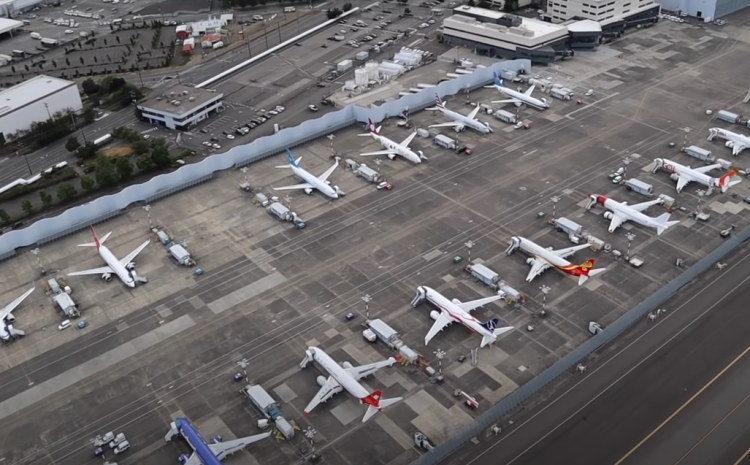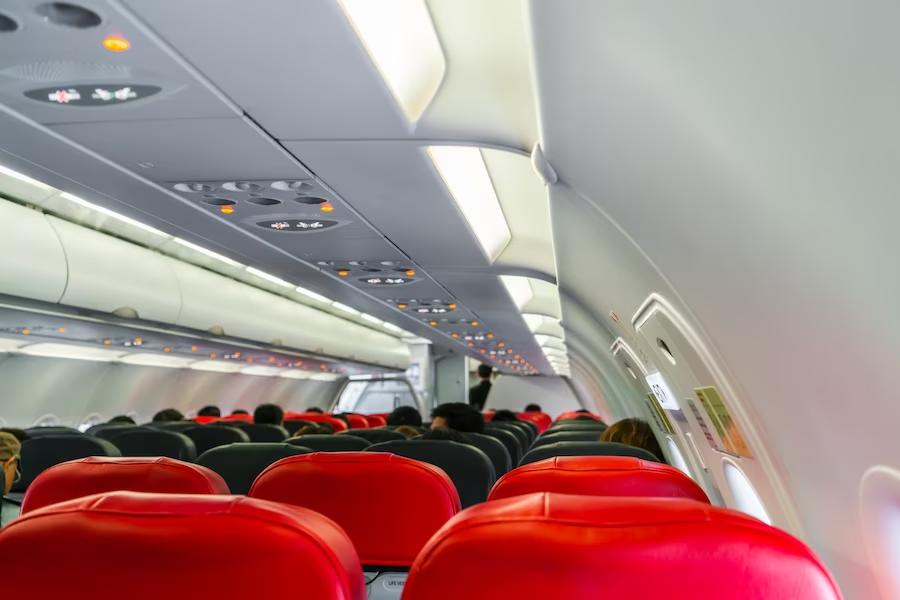A Deep Dive into the Passenger Capacity of a Boeing 737

Throughout the commercial aviation era, there’s been one standout name in the crowd – the Boeing 737. Renowned for its versatility, efficiency, and adaptability, the Boeing 737 stands as a remarkable achievement in aeronautical engineering. Over time, this aircraft has undergone numerous iterations and now serves as a crucial asset for hundreds of airlines worldwide. One of the defining factors among different 737 models is their passenger capacity. In this exploration, we delve into the depths of the Boeing 737 and examine its passenger capacity, shedding light on various models, factors that influence passenger capacity, and more.
Unfolding the Boeing 737 Family: Models and Their Capacities
1. Boeing 737-100
The genesis of the 737 family, the 737-100 was the pioneer that set the stage for subsequent models. This aircraft, known for its short, stubby fuselage, was introduced into service with Lufthansa in February 1968.
- Seating capacity (two-class): 85 passengers;
- Seating capacity (single-class): Up to 124 passengers;
- Exit Limit: 124 passengers.
2. Boeing 737-200
The successor to the 737-100, the 737-200 was a stretched variant. It had increased fuel capacity and more powerful engines, making it suitable for use in North America’s vast regional markets.
- Seating capacity (two-class): 102 passengers;
- Seating capacity (single-class): Up to 130 passengers;
- Exit Limit: 136 passengers.
3. Boeing 737-300
The first model in the Classic series, the 737-300 debuted in the 1980s and incorporated significant improvements over the previous generation, including a more aerodynamic design and fuel-efficient engines.
- Seating capacity (two-class): 126 passengers;
- Seating capacity (single-class): Up to 149 passengers;
- Exit Limit: 149 passengers.
4. Boeing 737-400
Introduced as a stretched version of the 737-300, the 737-400 provided airlines with increased seating capacity while retaining similar fuel efficiency and operational capabilities.
- Seating capacity (two-class): 147 passengers;
- Seating capacity (single-class): Up to 188 passengers;
- Exit Limit: 188 passengers.
5. Boeing 737-500
The 737-500 was a direct replacement for the 737-200, allowing airlines to maintain similar passenger capacities but with the added benefits of the Classic series’ modern advancements.
- Seating capacity (two-class): 108 passengers;
- Seating capacity (single-class): Up to 132 passengers;
- Exit Limit: 132 passengers.
6. Boeing 737 Next Generation series
Comprising the 737-600, 737-700, 737-800, and 737-900, the Next Generation (NG) series represented a quantum leap in terms of technological advancements, leading to better fuel efficiency and improved passenger comfort. These models are among the most popular variants of the 737.
- 737-600: 108 passengers (two-class) / 132 passengers (single-class) / Exit Limit: 149 passengers;
- 737-700: 128 passengers (two-class) / 149 passengers (single-class) / Exit Limit: 149 passengers;
- 737-800: 162 passengers (two-class) / 189 passengers (single-class) / Exit Limit: 189 passengers;
- 737-900: 177 passengers (two-class) / 220 passengers (single-class) / Exit Limit: 189 passengers (900ER variant has Exit Limit of 220 passengers).
7. Boeing 737 MAX series
The latest generation of the 737 family, the MAX series, brought significant improvements in terms of fuel efficiency, aerodynamics, and passenger comfort. Despite facing challenges and scrutiny following two accidents, the MAX series has returned to the skies, offering even higher capacities.
- MAX 7: 138 passengers (two-class) / 172 passengers (single-class) / Exit Limit: 172 passengers;
- MAX 8: 162 passengers (two-class) / 200 passengers (single-class) / Exit Limit: 210 passengers;
- MAX 9: 178 passengers (two-class) / 220 passengers (single-class) / Exit Limit: 220 passengers;
- MAX 10: 188 passengers (two-class) / 230 passengers (single-class) / Exit Limit: 230 passengers.
Each of the models in the 737 family has its unique characteristics and capacities, making it suitable for a range of airline operations and markets. From the 737-100’s humble beginnings to the high-capacity 737 MAX 10, the evolution of the 737 family tells the story of commercial aviation itself.
Behind the Figures: Understanding Factors Affecting Passenger Capacity

While the model of the aircraft is a primary determinant, several other factors also significantly influence passenger capacity.
| Factor | Description |
|---|---|
| Seating Configuration | The layout of the seats inside the cabin directly affects passenger capacity. Airlines typically choose between single-class (all economy seats) and multi-class (business/premium economy/economy) configurations. While single-class configurations maximize capacity, multi-class configurations provide better comfort, space, and additional amenities for passengers, albeit at the expense of total seat numbers. |
| Exit Limitations | Aviation authorities set maximum exit limits to ensure passenger safety. In an emergency evacuation scenario, this limit is the highest number of passengers that can safely exit the aircraft within 90 seconds. Even if there are more seats installed, airlines cannot exceed this limit. |
| Flight Duration | The duration of the flight can also influence passenger capacity. On long-haul flights, additional amenities like larger galleys for meal preparation and more spacious lavatories may be required, thereby reducing available space for passenger seating. |
| Government Regulations | Depending on the country, government regulations can also affect passenger capacity. For example, some nations have laws requiring a certain amount of space (pitch) between rows of seats, which can limit the number of rows that an airline can install. |
| Airline Business Model | Low-cost carriers often prioritize maximizing passenger capacity to reduce costs per seat, while full-service carriers may choose lower capacities in favor of greater passenger comfort and premium services. |
Conclusion
Boeing 737 is a diverse family of aircraft tailored to suit different market needs and operational requirements. Its passenger capacity varies widely based on the model and chosen configuration, reflecting the diverse strategies and priorities of airlines around the world. As the 737 continues to evolve, it remains an integral part of global air travel, ferrying millions of passengers each year to their destinations.
FAQ
Typically, a 737 features a 3-3 seating configuration in economy class and a 2-2 configuration in business class. However, variations can occur based on the airline’s requirements and the specific aircraft model.
Various factors can influence passenger comfort, such as seat width and pitch, cabin noise, temperature control, onboard amenities, and the layout of galleys and lavatories. Newer models of the 737, such as the NG and MAX series, have features to enhance passenger comfort, including quieter cabins, larger overhead bins, and LED mood lighting.
Yes, the 737 is designed to accommodate passengers with special needs. This includes accessible lavatories, onboard wheelchairs, and priority seating for individuals with mobility issues.
The cargo capacity of a 737 depends on the specific model. For example, the 737-800 has a cargo capacity of about 1,555 cubic feet, while the larger 737 MAX 10 can carry up to 1,814 cubic feet of cargo.